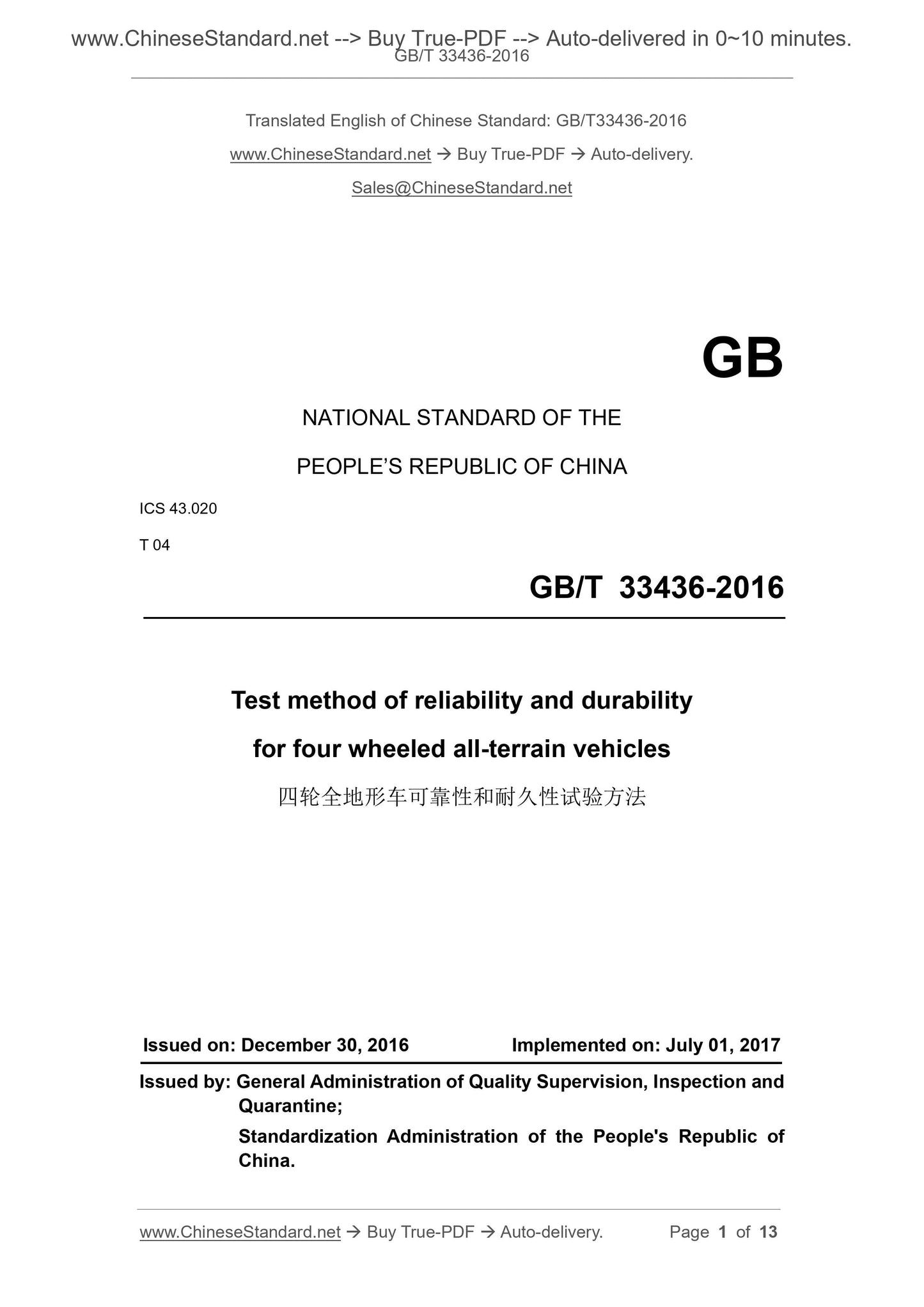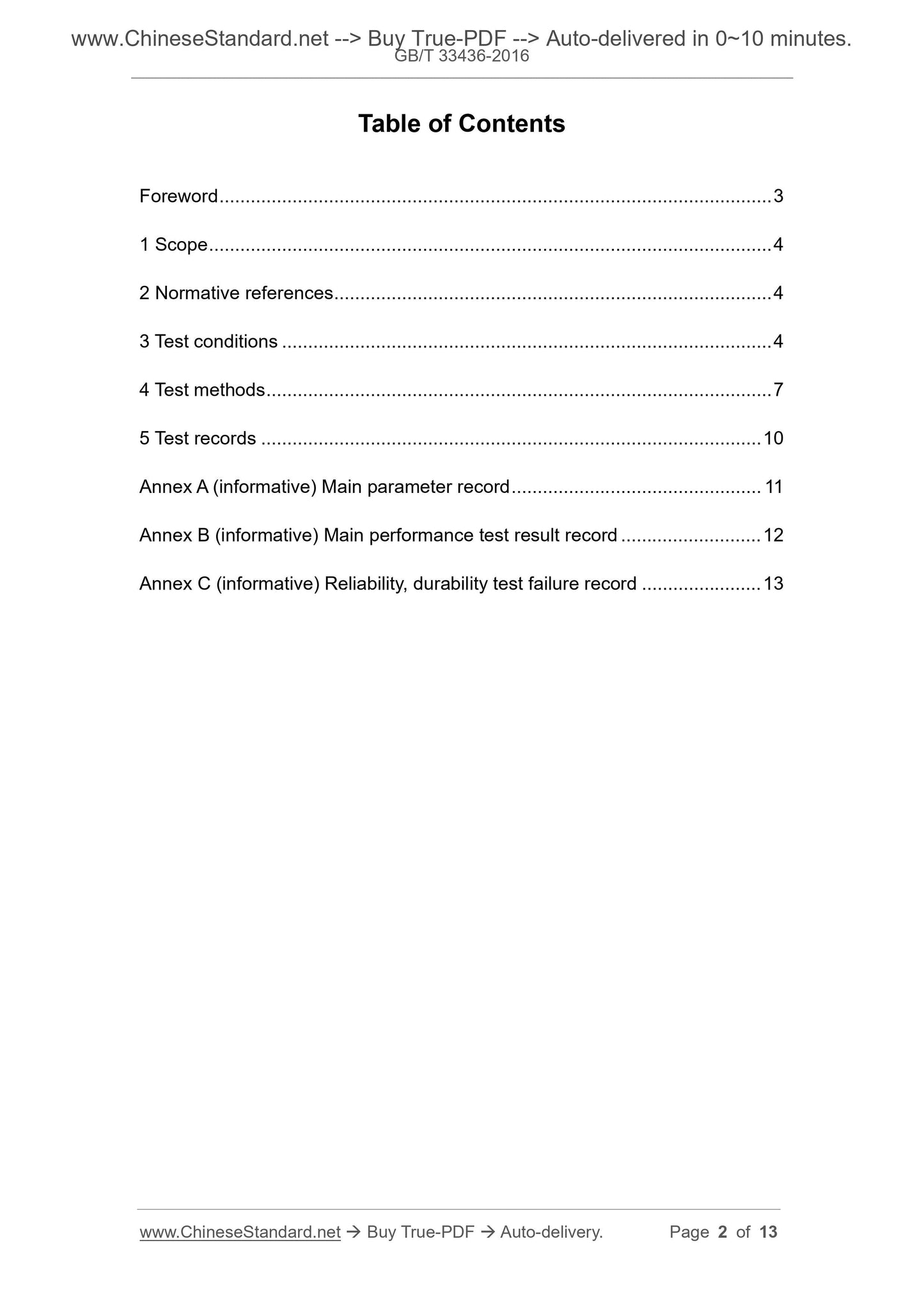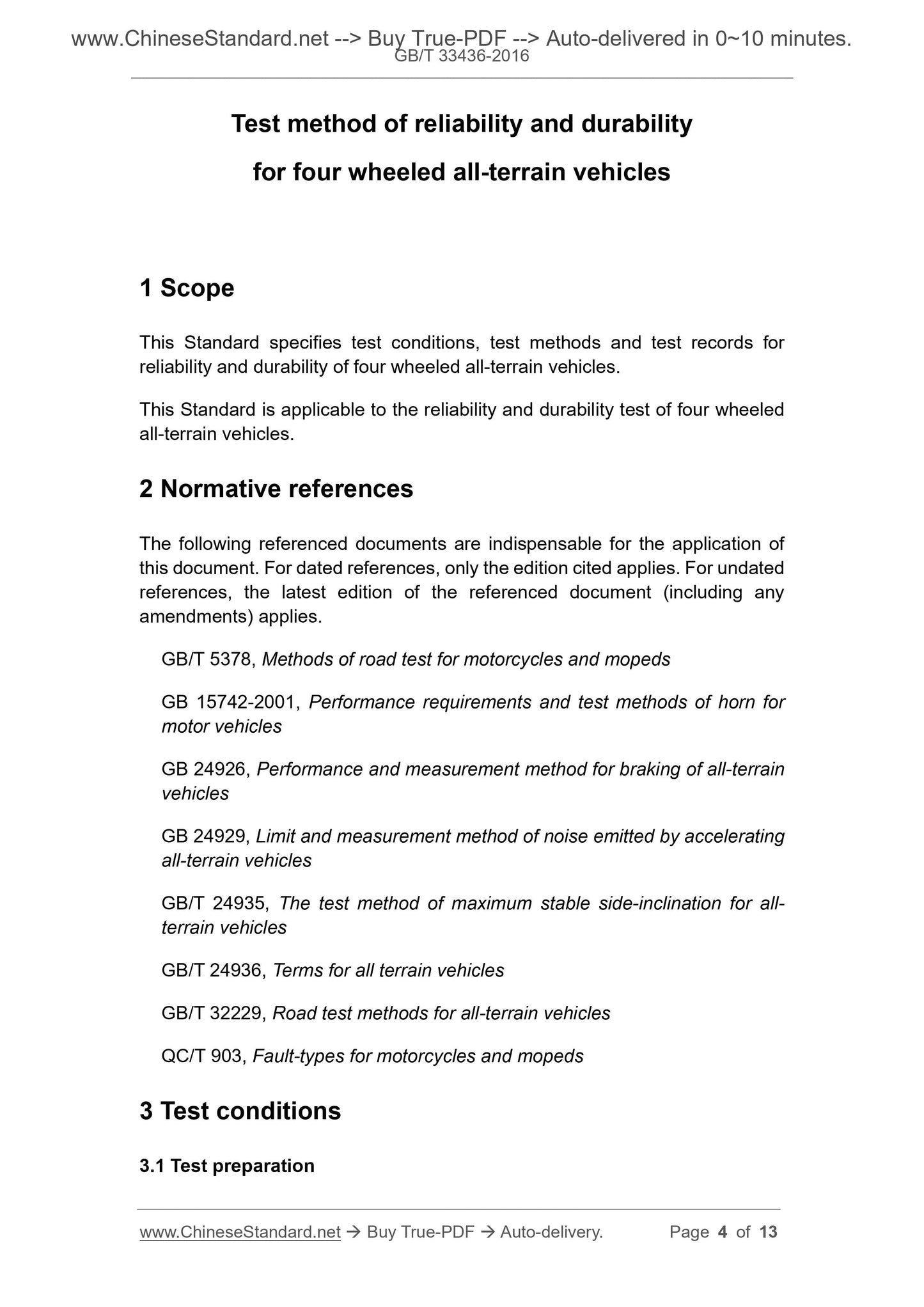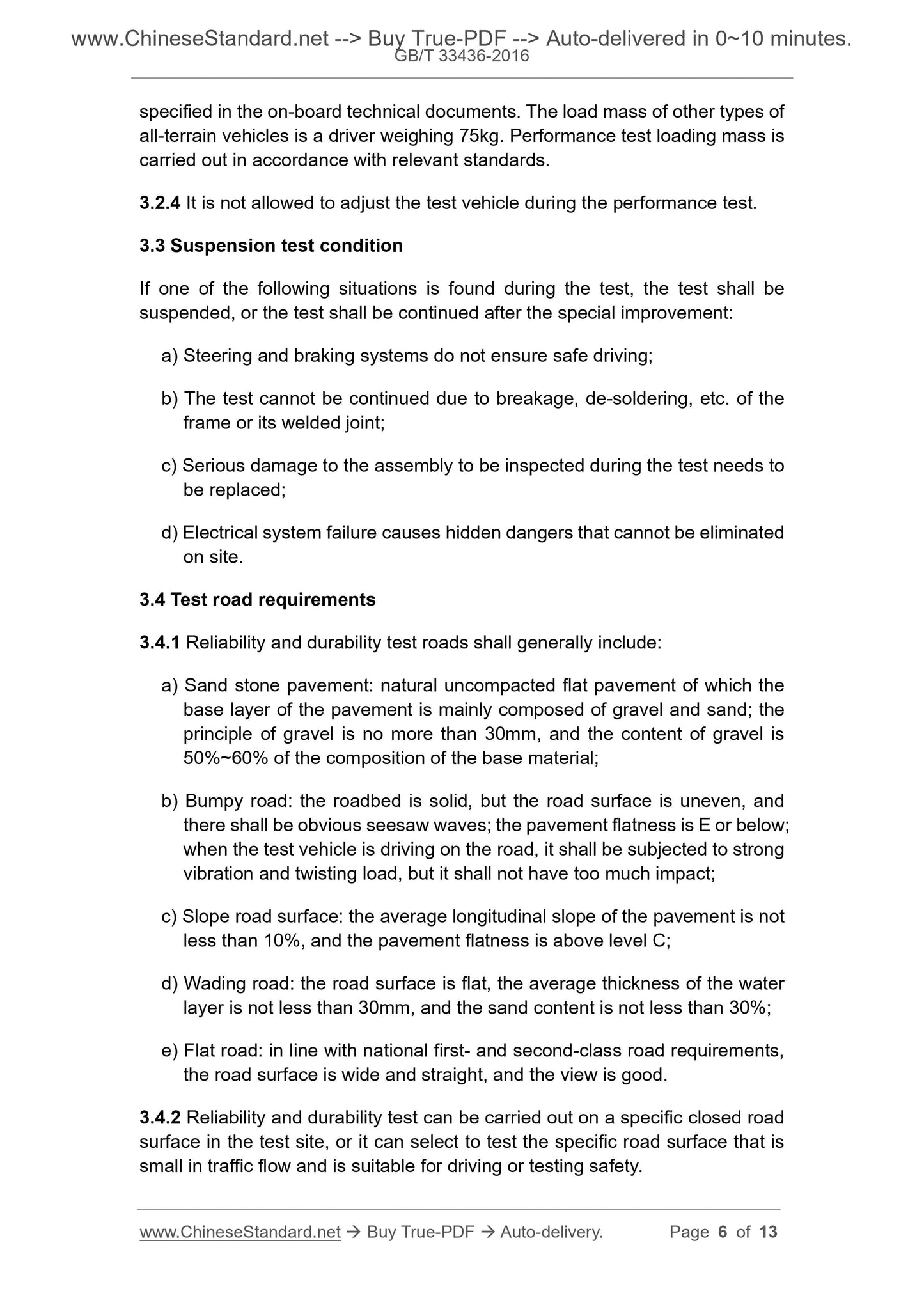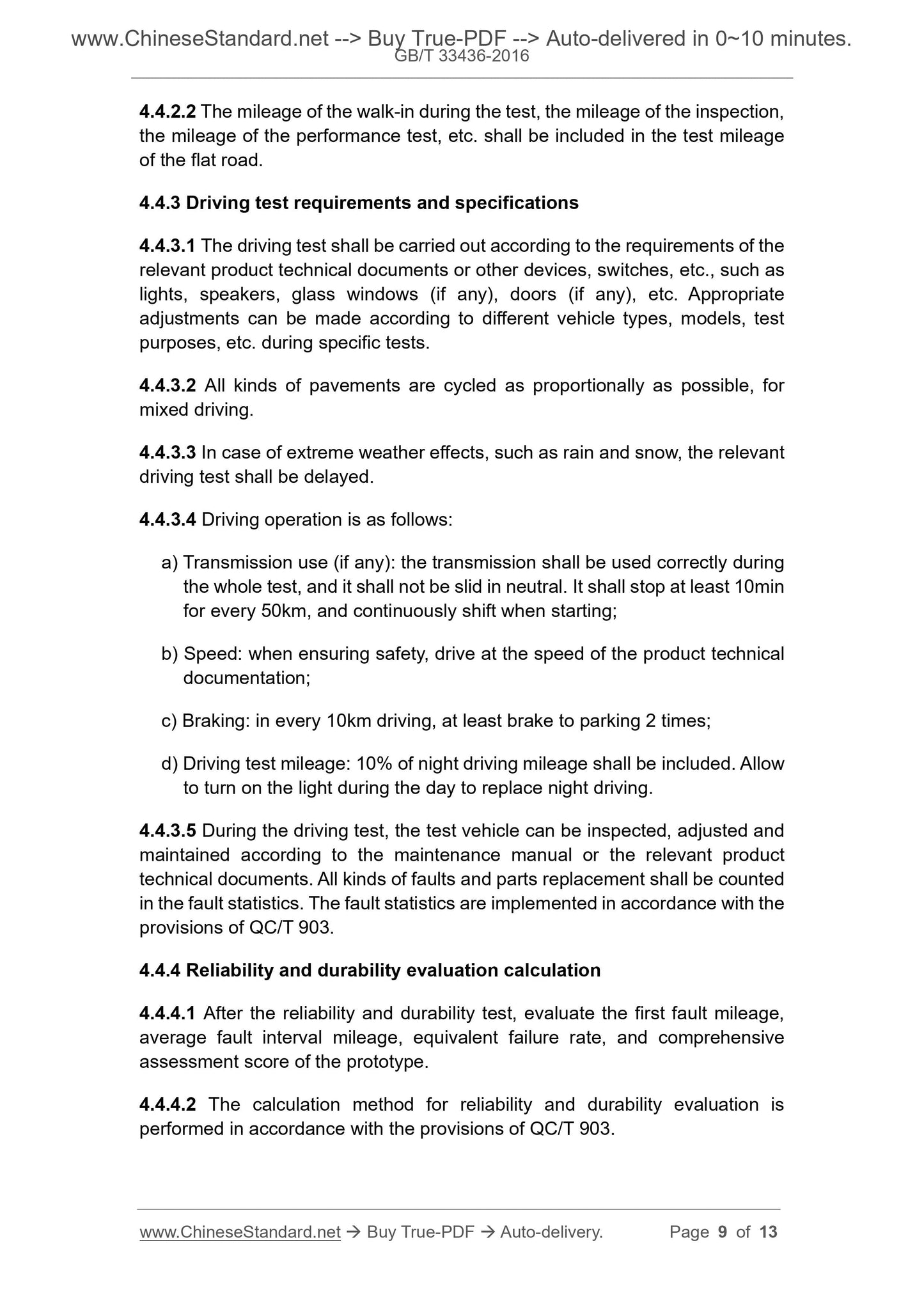1
/
of
5
www.ChineseStandard.us -- Field Test Asia Pte. Ltd.
GB/T 33436-2016 English PDF (GB/T33436-2016)
GB/T 33436-2016 English PDF (GB/T33436-2016)
Regular price
$160.00
Regular price
Sale price
$160.00
Unit price
/
per
Shipping calculated at checkout.
Couldn't load pickup availability
GB/T 33436-2016: Test method of reliability and durability for four wheeled all-terrain vehicles
Delivery: 9 seconds. Download (and Email) true-PDF + Invoice.Get Quotation: Click GB/T 33436-2016 (Self-service in 1-minute)
Newer / historical versions: GB/T 33436-2016
Preview True-PDF
Scope
This Standard specifies test conditions, test methods and test records forreliability and durability of four wheeled all-terrain vehicles.
This Standard is applicable to the reliability and durability test of four wheeled
all-terrain vehicles.
Basic Data
| Standard ID | GB/T 33436-2016 (GB/T33436-2016) |
| Description (Translated English) | Test method of reliability and durability for four wheeled all-terrain vehicles |
| Sector / Industry | National Standard (Recommended) |
| Classification of Chinese Standard | T04 |
| Classification of International Standard | 43.020 |
| Word Count Estimation | 10,150 |
| Date of Issue | 2016-12-30 |
| Date of Implementation | 2017-07-01 |
| Regulation (derived from) | National Standard Notice No.27 of 2016 |
| Issuing agency(ies) | General Administration of Quality Supervision, Inspection and Quarantine of the People's Republic of China, Standardization Administration of the People's Republic of China |
Share
